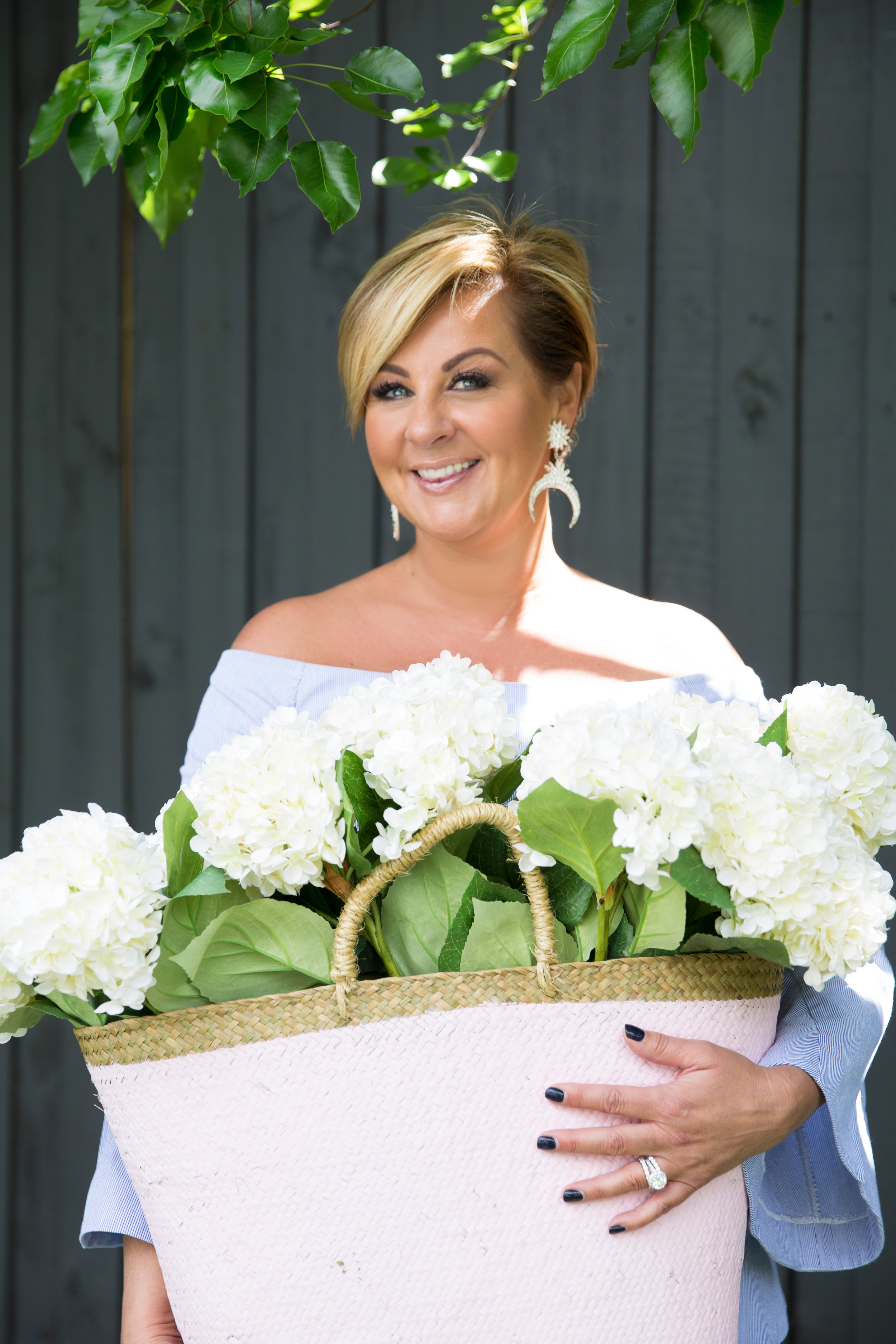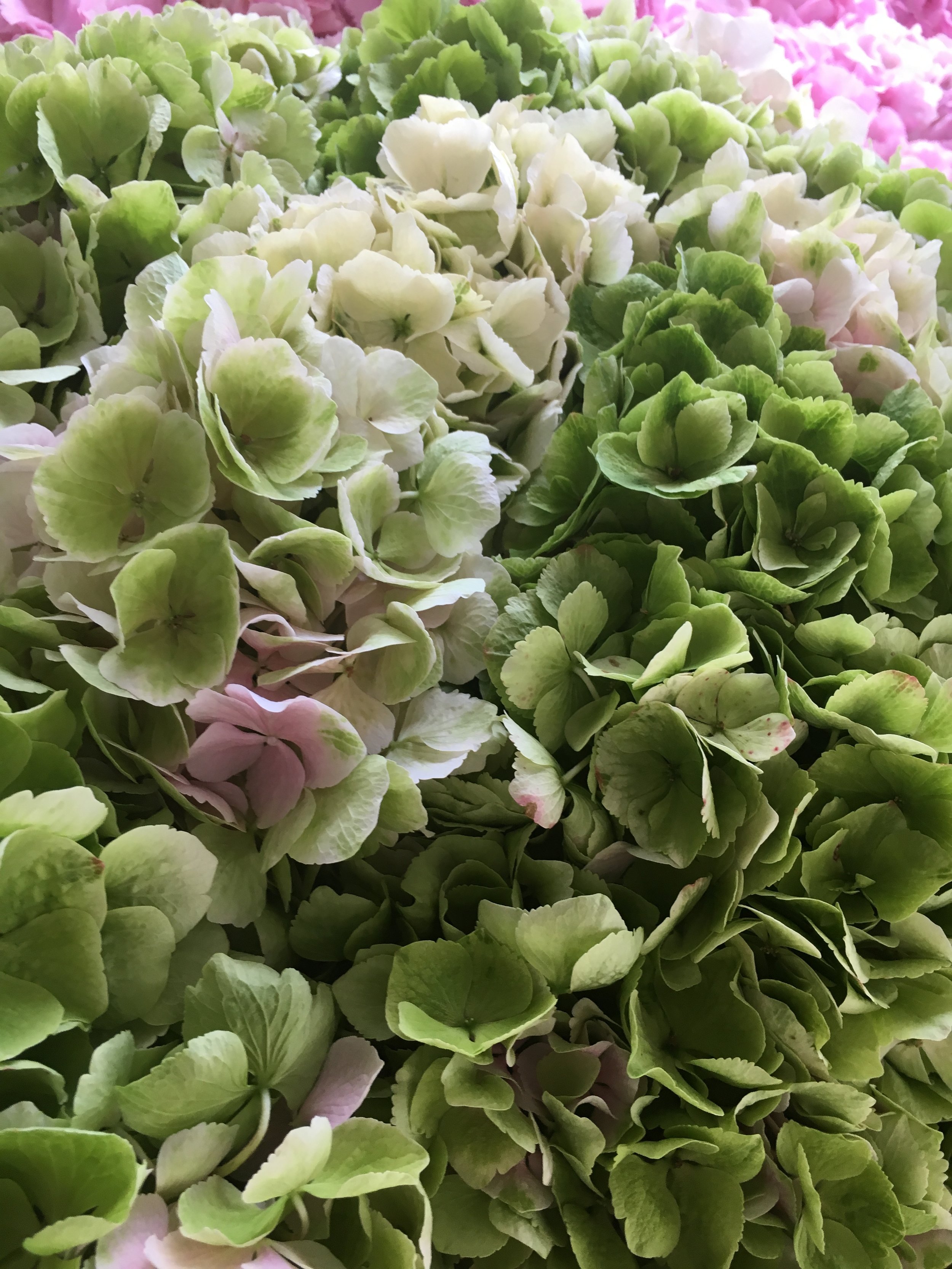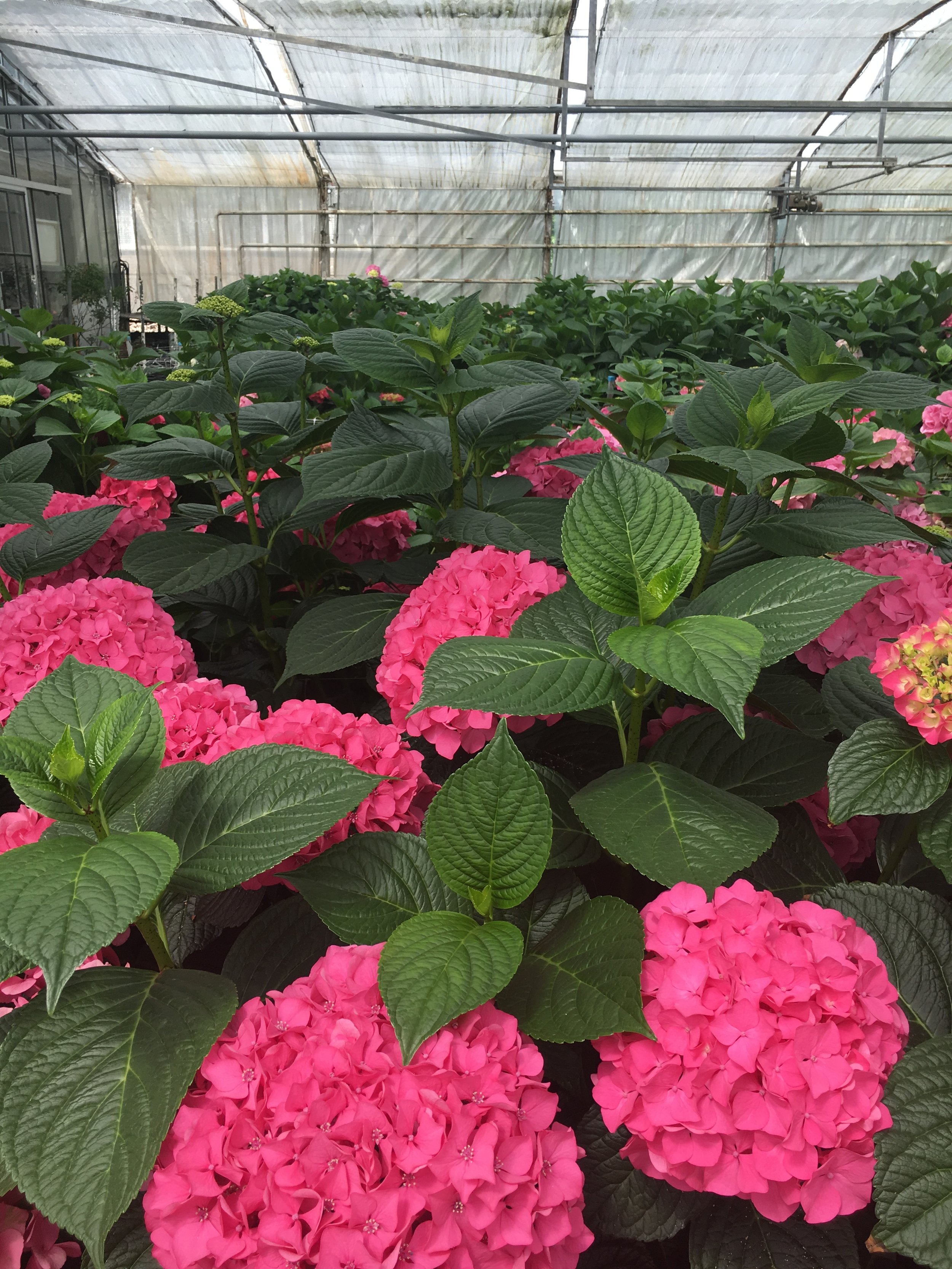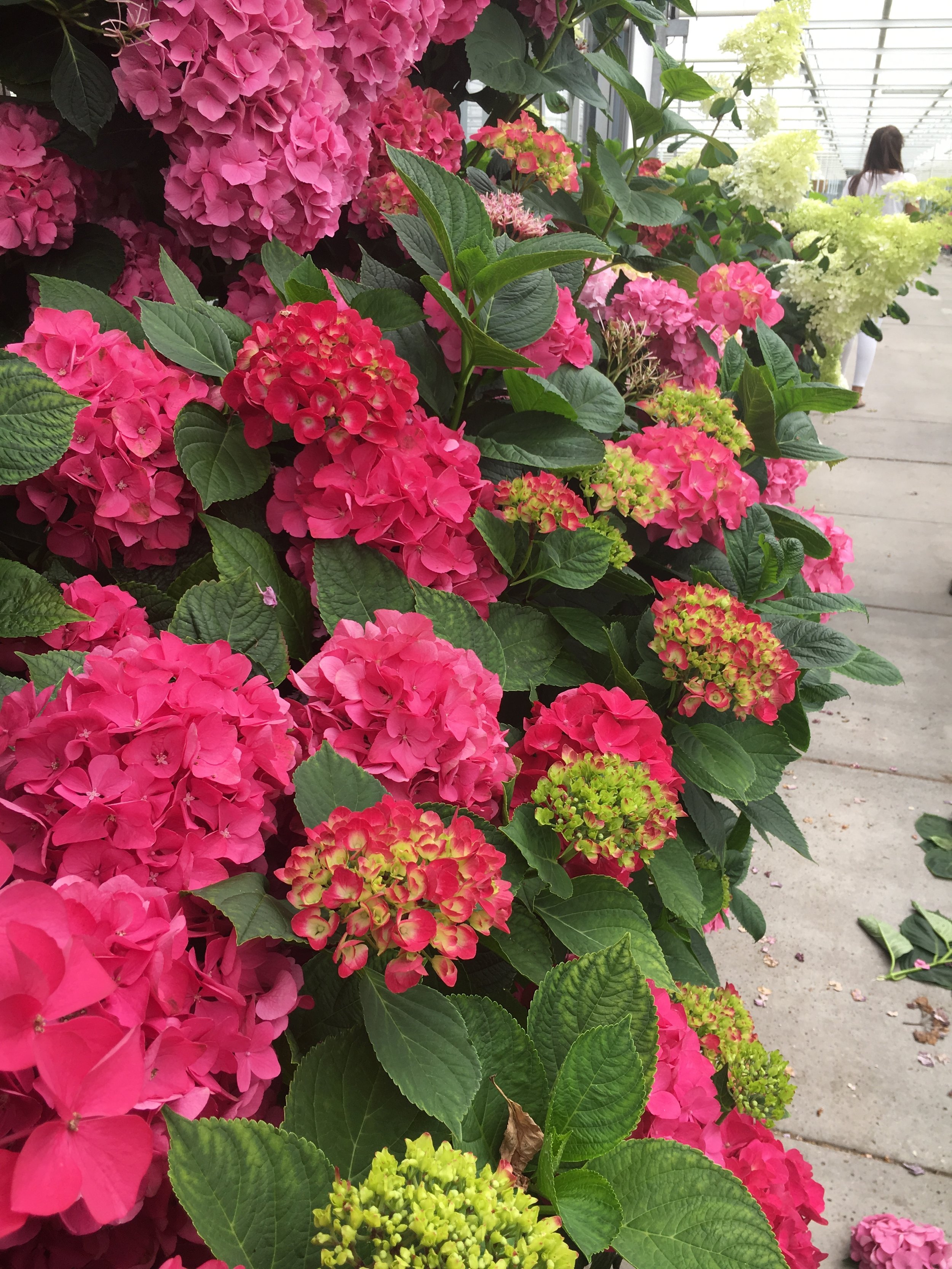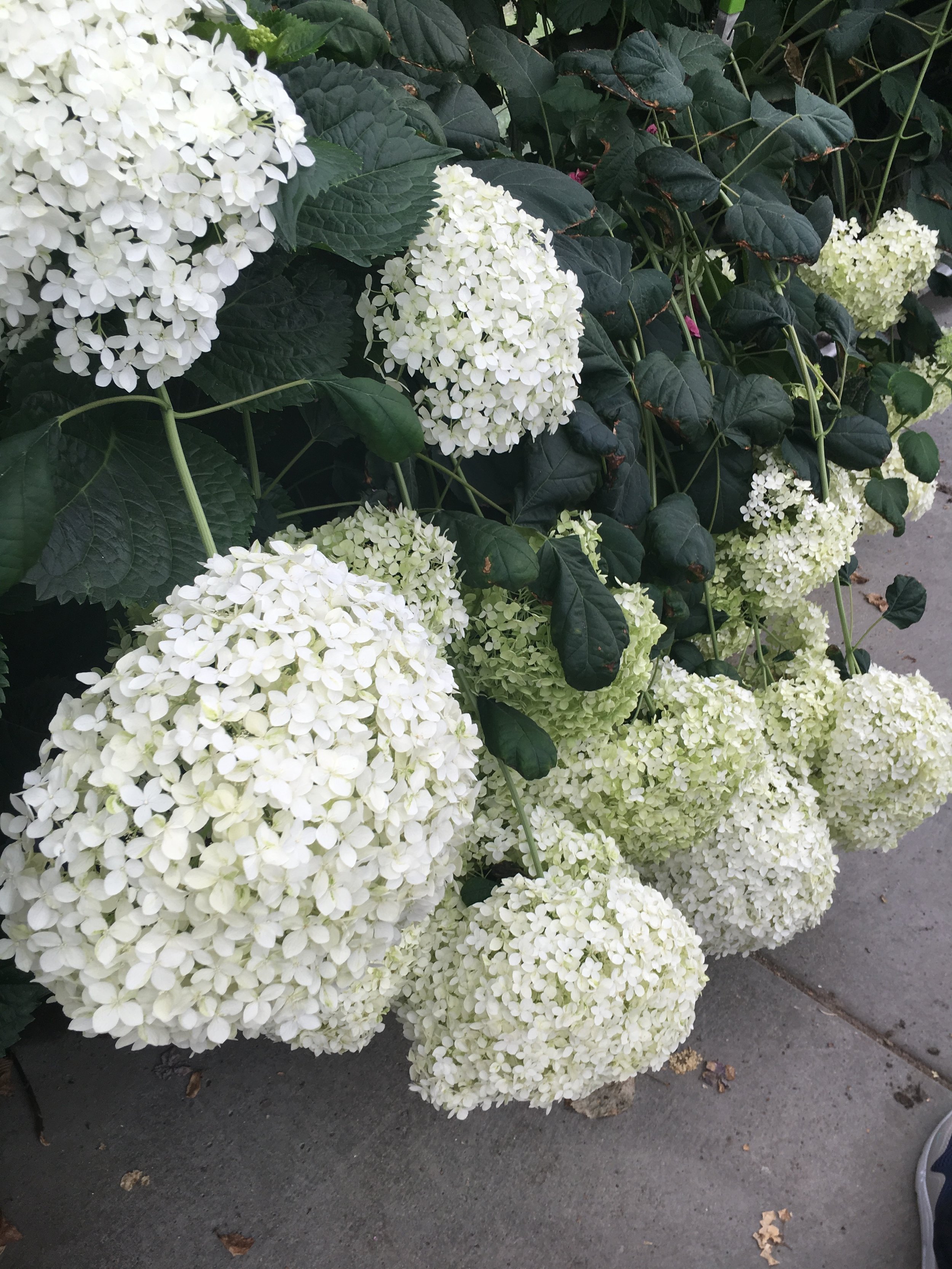How To Care For Your Hydrangeas
WORDS:: Chyka Keebaugh
PHOTOS:: Lisa Atkinson, Chyka Keebaugh
Hydrangeas are one of my most favourite flowers, and when they're in season I cannot get enough of them! But they need some careful attention to ensure they last.
Is there anything more beautiful than seeing a hydrangea in full bloom? I think not. These flowers have so much old-fashioned charm that they are one of my absolute favourites. Hydrangeas look magnificent planted in groups, alone in pots or even sitting in vases. Available is a variety of colours from vibrant pinks to lavender to frosty whites, hydrangeas will suit almost any décor.
Hydrangea colours can change depending on the PH level of the soil, so they are perfect plants if you want to do a little colour experimentation. Switching colours is not an overnight science test though. Colour changes can take weeks, or even months, and can only be done on older plants that are robust and healthy. When travelling through Europe this year, I was lucky enough to visit a hydrangea farm. It was one of the most amazing experiences to be surrounded by such beauty and vivid colours. It definitely inspired me to get some planted in the garden to enjoy throughout summer.
Care tips for Hydrangeas in vases::
- Make sure you cut your flowers on the diagonal, put them straight into room temperature water.
- If you are taking cuttings from your plants, cut the oldest blooms; let the new ones blossom.
- Cut the leaves of your stems; they drain your water. You want to make sure your stem gets the all the water.
- Believe it or not - if you dip the stems of your blooms into boiling water you will get rid of the sap hydrangeas produce which stops water from feeding it correctly. A 30-second dip will do the trick, the straight into the case.
- Replace the water every day.
Care tips for Hydrangeas in your garden::
- Hydrangeas love water! Pot them in rich soil that is well hydrated and moist. Watering almost daily during the warmer months.
- Keep your plants about 5 feet apart, dig them into a big hole about two times wider than the roots to ensure growth.
- Plant your hydrangeas in spring or autumn, and although they prefer full sun in the mornings, they will grow in partial shade.
- If the soil is light and sandy, use a fertiliser once a year to keep the soil healthy. If your soil is too dry the leaves will wilt, so water water water!
- Once your flowers have bloomed, prune them back from the flower head. Do not cut the stems that haven’t flowered; you’ll see them next year.
- Be careful if you have puppies or dogs that like to chew on plants - Hydrangeas can be poisonous to dogs.
Care tips for artificial Hydrangeas::
- Dust, your artificial flowers with a feather duster, to get the majority of the dust off before you prepare to wash.
- You can spray your flowers with a mixture of vinegar and water; just make sure you lightly spray them and have a towel underneath to absorb the liquid.
- A good wipe down after dusting is sometimes all they need to stay ‘fresh.'
- I’ve been known to spray artificial flowers with perfume, just for a floral smelling boost!
Cleaning artificial flowers is pretty simple, and Provincial Home Living have some of the most realistic life-like Hydrangea stems if you want an easy, no-fuss solution that will give you colour all year round. Earlier this year I created a step-by-step article about how to clean artificial stems properly so that they last you a lifetime. Read the full post here…

